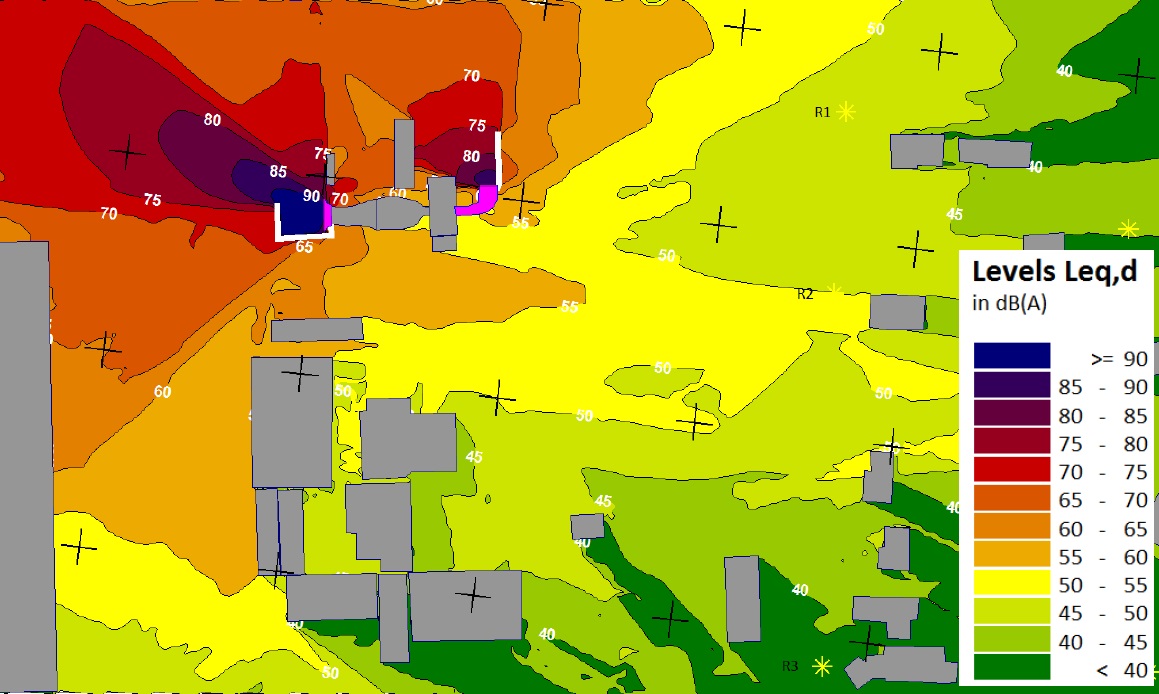Noise source sound power level prediction
In many applications, sound power levels have to be derived due to a number of noise sources that have to be identified. VG Engineering is able to predict the noise sound power levels from sources using industrial standards, VGE proprietary programs and databases for equipment such as: gas turbine engines, fans, air compressors, high speed jets, control valves, cooling towers, pumps, boilers, furnaces, diesel and gas driven engines, generators, transformers, electric motors, gears, transportation noise and others.
Establishment of noise and vibration criteria
VG Engineering can interoperate international noise standards and directives, and is familiar with the effects of noise and vibration on human health and life. VGE can establish the noise and vibration criteria for your application or facility to meet required standards and/or bylaws.
Noise propagation analysis and noise control strategy
VGE provides simulation of sound propagation through silencers, barriers, enclosures, and open spaces based upon source directivity, air absorption, terrain and meteorological effects. This iterative process establishes a cost effective noise control strategy through analysis to optimize the performance of each controllable device/factor/parameter. VGE have extensive industrial experience that plays an essential role in forming a practical and cost effective noise control solution.
Silencer performance calculation
VGE silencer performance is established through the use of a VGE proprietary program based on finite element analysis using our silencer R & D testing database and validated silencer installations.
Sound transmission loss prediction
VGE predict Sound transmission losses through casings, panels or walls with single or multiple layers of different materials using our proprietary program and VGE database.
Barrier wall and enclosure performance prediction
VGE predict Barrier wall and enclosure performance by taking the following factors into consideration: barrier height, barrier length, source height and receiver height, background noise, meteorological conditions, enclosure wall and roof construction, and enclosure openings.

